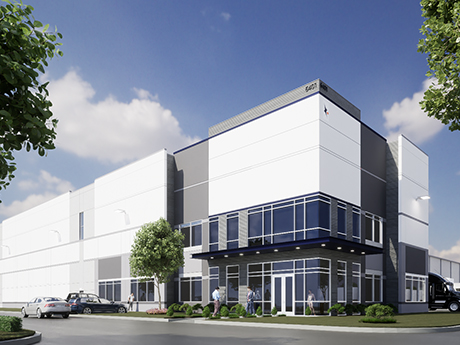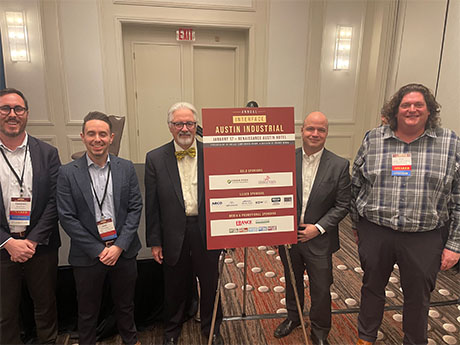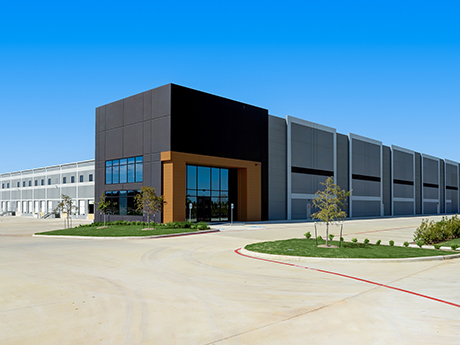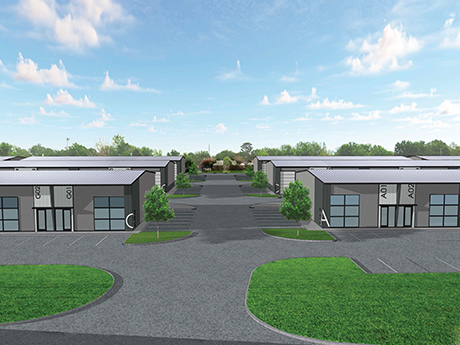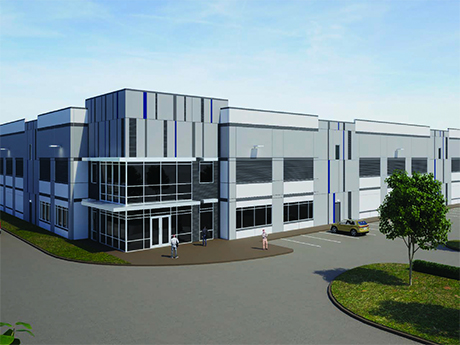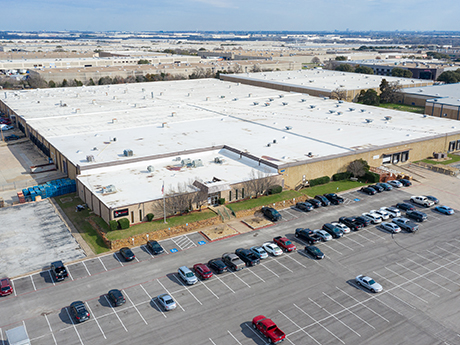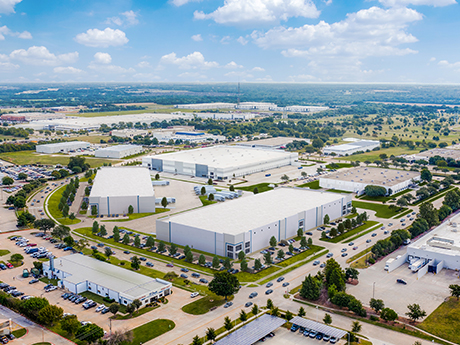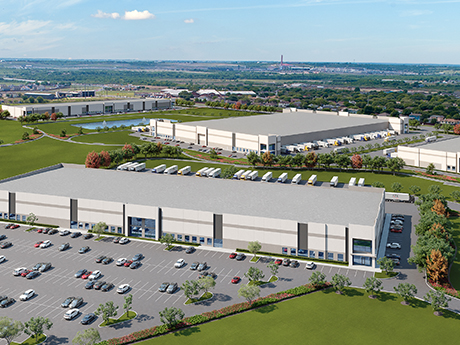The more things change, the more they stay the same. More than 150 years after the old French proverb was coined, industrial real estate professionals in Texas who have a penchant for philosophy may well be seeing its application play out in real time. While the industrial market has cooled from 2021 and early 2022, when insatiable demand drove record rent growth, there are still enough positive fundamentals within the space to counteract the likes of inflation, interest rate hikes and geopolitical uncertainty during an election year. Against that backdrop, owners and brokers are frequently reminded of how fortunate they are to be doing business in the Lone Star State. Muchos Gracias Job and population growth are the Letterman guests who need no introduction, as they have always driven expansion and value creation in Texas across all sects of commercial real estate. But as powerful as those drivers are, they’ve been there all along. In recent years, as disruption in debt markets has slowed industrial supply growth and inflation has put pressure on tenants’ costs of occupancy, other macro-level forces have also emerged to buoy the market. Specifically, the impacts of a growing concentration of manufacturing operations in Mexico have …
Industrial
By Taylor Williams When it comes to industrial supply growth in Central Texas, the usual suspects — land availability, interest rate movement, time-consuming permitting and approval processes — are all secondary to the need for more infrastructural development to support these projects. Roadways, public transit systems, electrical capacity, sewerage and water services — these are the key ingredients in the recipe for successful industrial development in Central Texas that can sometimes be overlooked or understated in importance. As such, economic development corporations (EDCs) in the area are prioritizing infrastructure development in their work as they help developers add much-needed industrial space to support the area’s burgeoning population. While underlying, efficient infrastructure is critical to all real estate developments and human occupation, it is especially crucial to industrial projects. Large-scale manufacturing facilities — think Tesla in East Austin and Samsung in its northern suburb of Taylor — employ thousands of people. Housing hasn’t caught up to population growth in many of the surrounding communities, necessitating alternate means of commuting. In addition, manufacturing and e-commerce facilities tend to have above-average electrical capacity requirements. Financially, meeting that demand might be made somewhat easier in a state that has a deregulated power grid, but logistically, …
By Taylor Williams The Houston industrial market has generally performed quite well over the past few years, even as a global pandemic, record inflation and hard-hitting interest rate hikes have rocked the commercial real estate industry as a whole. Demand for industrial space has held firm due to rebounding energy prices and expansions in infrastructure and traffic at Port Houston, as well as organic population growth and economic diversification that has elevated the market’s role as a distribution hub. According to data from CBRE, the market has a 6 percent vacancy rate and posted 5.1 million square feet of positive net absorption through the first three quarters of 2023. The volume of new construction was on track to outpace absorption in 2023 when the report was released. But that was not the case in 2021 and 2022, years in which net absorption equaled and exceeded 7 million square feet, respectively. New deliveries totaled approximately 5.6 million and 5.4 million square feet in each of those years, driven not only by the aforementioned factors but also by a temporary uptick in demand for e-commerce services in the wake of the pandemic. In any market or asset class, when absorption exceeds supply …
The effects of sweeping macroeconomic forces in recent years are now manifesting themselves in industrial projects in Dallas-Fort Worth (DFW). And while the market still enjoys healthy fundamentals and tenant demand, the product being delivered now comes with a new look, functionality and set of requirements from end users. To some degree, this paradigm shift in how industrial properties are conceived, designed and constructed stems from major economic factors and trends that are beyond the ability of architects, contractors and developers to control. To start with the obvious, interest rates are now five times what they were 18 months ago. When hikes of that magnitude are enacted so expeditiously, real estate professionals of all walks are impacted, even if it’s in an indirect manner. “Demand for industrial space is there; if developers are building, the rents are probably there to cover those costs,” says Mike Williams, vice president of preconstruction at Dallas-based Talley Riggins Construction Group. “But for developers that are trying to form a team to get enough equity to get a loan — those deals aren’t working anymore with these rates. So paying extra close attention to who your clients are and their funding sources has been the …
By Taylor Williams Tenant demand and availability of capital for industrial deals are still healthy in Texas, but end users and developers are demonstrating a clear push for smaller footprints in their leases and projects. This shift reflects a marked departure from recent years, when massive speculative facilities were financed without hesitation or preleasing and industrial users had little choice but to accept staggering levels of rent growth. Spikes in interest rates bear some, but not all, blame for this emerging dynamic. Local and regional banks tend to be go-to debt providers on industrial projects, and these groups take defensive positions with their capital flows during high interest rate environments. And while reliance on e-commerce and third-party distribution remains deeply ingrained in consumer preferences, users still see value in rightsizing their footprints in today’s market. As such, the industrial landscape is changing in Texas, where exceptionally strong population growth nonetheless ensures that the sector remains on very solid footing overall. But changes are undoubtedly happening. Large-scale spec facilities are being swapped for smaller build-to-suits, and manufacturing deals are taking up a larger share of the development pipeline. Lenders are tightening leverage and demanding more upfront equity for projects that they …
By Ron Gilbreath, managing director of asset & property management, Westmount Realty Capital It’s no trade secret that global lockdowns during the pandemic had a significant and lasting impact on supply chains worldwide. EY’s 2023 poll revealed that 72 percent of senior-level supply chain executives experienced negative impacts on their businesses due to the pandemic, resulting in the emergence of a concentrated focus on supply chain visibility. The crucial point to acknowledge during this continued disruption is that these impacts are closely tied to the just-in-time (JIT) inventory management system. As a result of these challenges, businesses are actively reassessing their distribution network strategies, leading to a surge in demand for industrial warehouse space. With the necessity to maintain greater inventory levels, companies are re-evaluating their warehouse space requirements and distribution setups to mitigate the risk of future supply shortages. The lockdowns disrupted two essential elements of JIT strategy: steady production and supplier reliability. Suppliers forced to comply with government lockdowns incurred major disruptions across various business lines due to the challenge of maintaining consistent production. This is a key component of JIT delivery that relies on having materials physically present during the production process. When these materials are unavailable, …
By Ben Wallace, SIOR, vice president, Colliers Over the past decade, “suburban industrial” buildings have become more critical than ever. A suburban industrial building can be defined as one that is located within the suburbs of a major metroplex and designed for small- to medium-size users with above-average allotments of office/showroom space to accommodate service and light distribution uses. The typical building and infrastructure designs naturally limit heavy truck traffic and achieve higher rental rates, deterring heavy distribution and manufacturing users from locating there. With macro-level shifts in how people shop for and acquire goods and services, the need for suburban industrial buildings that are located near consumers has become increasingly important. Most cities have done an excellent job of regulating and altering development standards for these assets to meet this need while being careful to avoid creating rundown industrial areas in their communities. These cities have achieved this goal by elevating development standards to feature clean concrete exterior façades as well as the screening of dock loading areas and attractive glass entrances. The reason that many of these items are important is that the vast majority of these suburban industrial developments are not appropriately zoned when developers come to …
By Taylor Williams “Numbers never lie; they simply tell different stories depending on the math of the tellers.” Mexican-American poet Luis Alberto Urrea may not have been talking about commercial real estate development and investment when he wrote that line, but the implications of that statement are undeniably applicable to those fields. The use of numerical projections in commercial development and investment is different from employing sabermetrics in sports or using predictive analytics to diagnose illnesses in medicine. Hard costs are what they are, and the formulas that developers and investors rely on to make critical decisions tend to be well-established in their rigidity, even if their inputs can and do change. Respecting the time-tested veracity of these formulas can make the difference between coasting through a down cycle or being crushed by it. Yet this is a world in which complex equations, algorithms and computations increasingly influence key business decisions. And so the ability to accurately forecast, control and manipulate numerical inputs is beyond valuable. Underwriting represents the piece of the real estate development or acquisition process in which these numerical details are shoved under the microscope and relentlessly finagled in hopes of keeping a development or deal alive. …
By Taylor Williams The current industrial development landscape in Texas is a true testament to the awesome power of demand — and of interest rate hikes. From El Paso to Houston, industrial users of all sizes and across all industries continue to demand new or expanded spaces to accommodate their ever-growing warehousing, distribution and manufacturing needs. E-commerce, nearshoring, COVID-19 — name your impetus — they’ve all contributed to a feverish pace of industrial development and absorption in recent years. According to fourth-quarter 2022 data from CBRE, Dallas-Fort Worth (DFW) saw an annual supply gain of about 36.1 million square feet in 2022 while posting positive net absorption of 36.5 million square feet. Third-party logistics users drove much of the new leasing activity, which contributed to a 4.6 percent vacancy rate at the end of the year. The market has now posted consecutive years of sub-5-percent vacancy. Fittingly, there remains more than 75 million square feet of product under construction throughout the metroplex. In Houston, developers delivered approximately 18.8 million square feet of new industrial space in 2022, per CBRE. Yet the market posted more than 30 million square feet of positive absorption over the course of last year, and the …
By Tyler Ziebel, Colliers Following one of the most active and aggressive periods in Chicago’s industrial capital markets history, 2022 ended as a year most market participants would rather forget. As the buying community returned to their desks and fastened their seatbelts for another year of fun in 2023, industrial sales brokers across the country are starting the year posed with a question from investors that hasn’t been asked in some time: “What are we going to be able to buy this year?” It’s easy to assume that investors will remain content to sit out of the turbulent market, but the answer to where we are, and aren’t, seeing liquidity requires a nuanced answer. In order to do that, we must take a quick look at 2022 and what set this uncertain market in motion. After several record-setting years for industrial leasing and sales in 2020 and 2021, accelerated by the COVID pandemic and a historically low interest rate environment, 2022 opened with the same frenzied pace and enthusiasm of 2021. But as the Federal Reserve pivoted its focus from keeping the economy stable to taming the resulting inflation, rapidly rising interest rates grounded institutional industrial transactions and development deals …
Newer Posts


